#nonbinary lafayette
Explore tagged Tumblr posts
Text
Unlock It! 🔓
#disney channel#marvel#moon girl and devil dinosaur#mgadd#banned episode#the gatekeeper#coach greer#lunella lafayette#mgadd brooklyn#lgbtq#transgender#trans#nonbinary#video games#mixtape#charlie xcx#kim petras#jay park
764 notes
·
View notes
Text
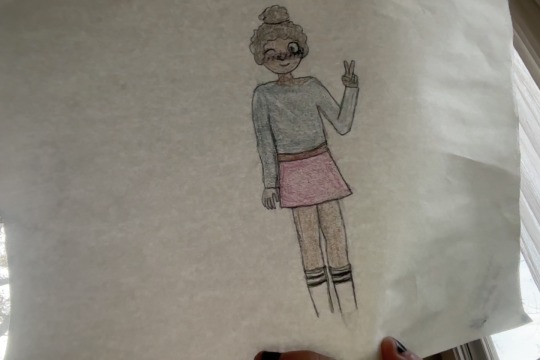
so my art style is like the owl house sorry, but i read a fic with non-binary lafayette and decided to draw it
3 notes
·
View notes
Text
CHRISTMAS STICKER HAUL
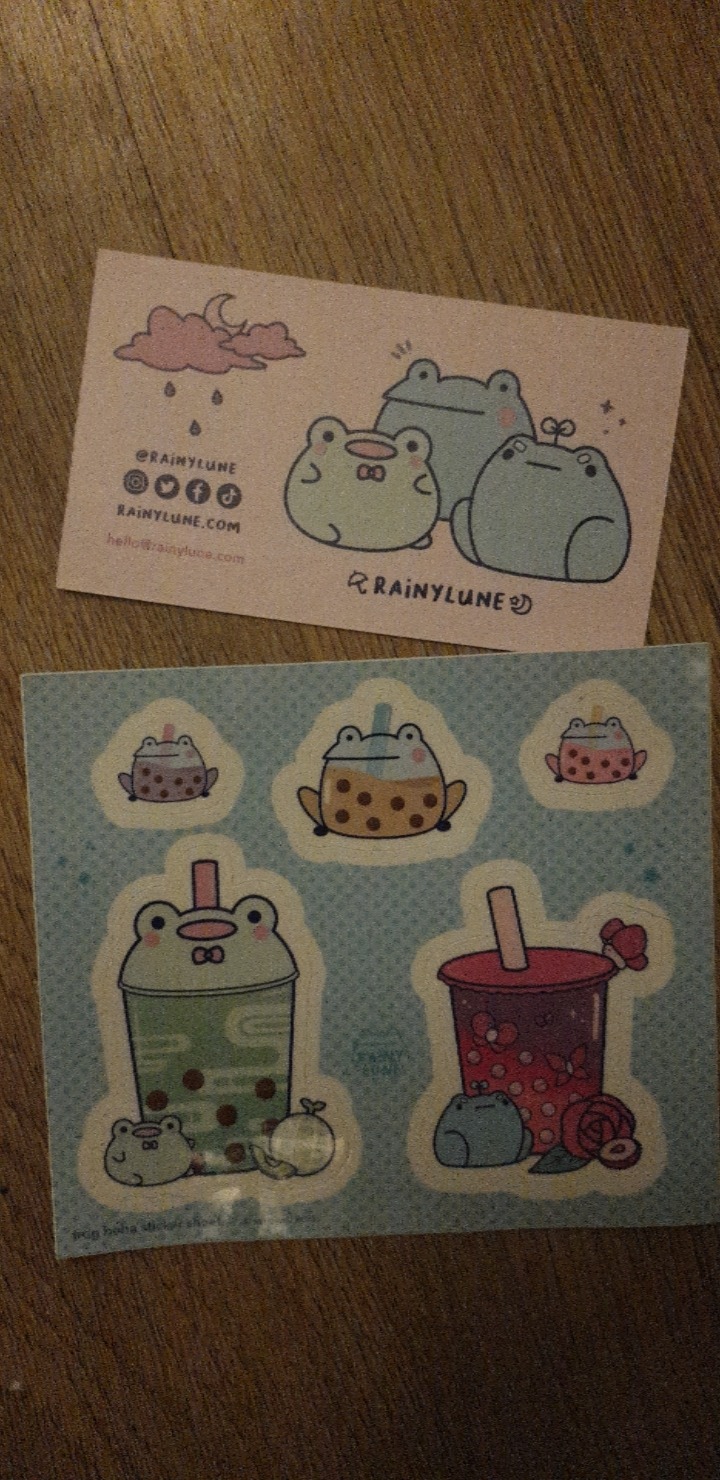
All the badges have their respective creators business card beside them
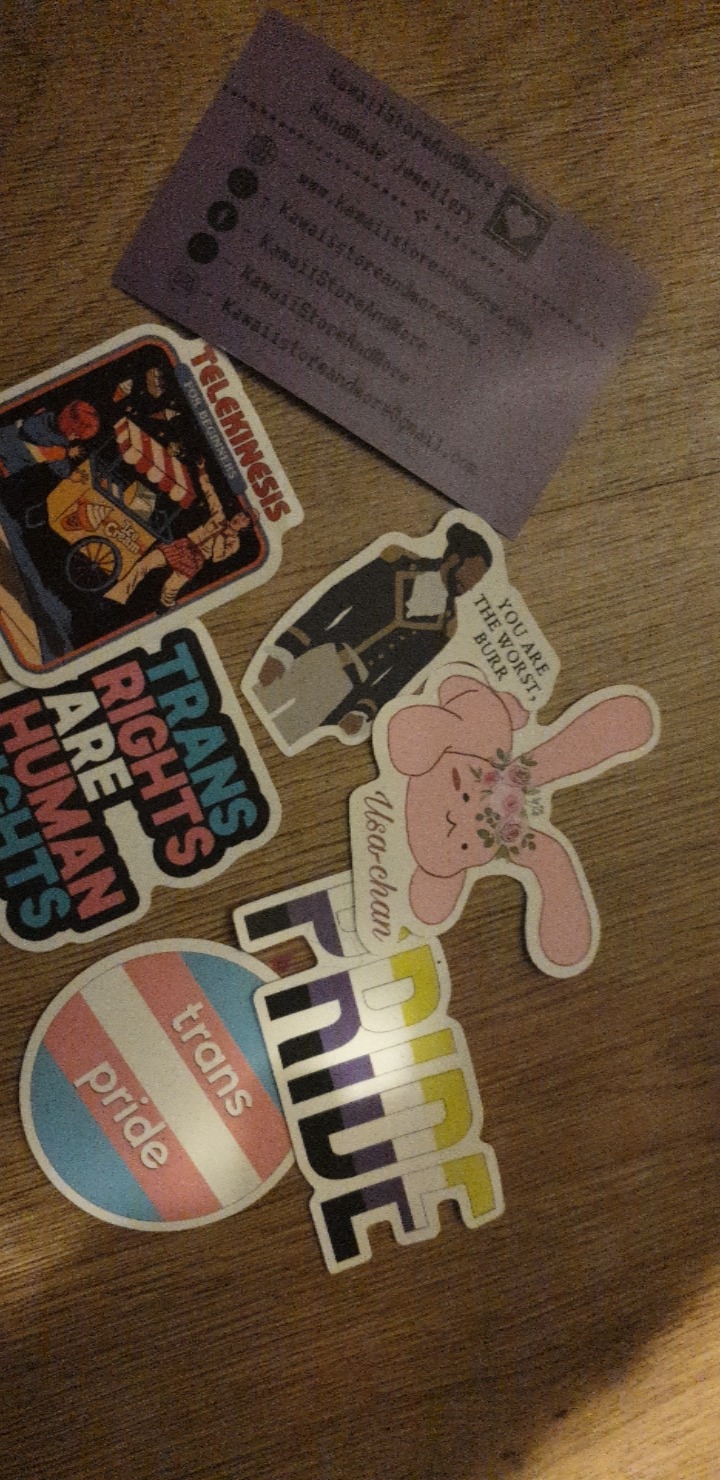
And one with just the cards for a better read

#stickers#frogs#Hamilton#hamilton the musical#hamilton lafayette#lafayette#lafayette hamilton#transgender#trans pride#nonbinary#non binary#non biney#masc enby#enby pride#enby stuff#i love frogs#frogblr#frog sticker#frog merch#bobba tea#small business#rainylune#home business#small shop#independent business
13 notes
·
View notes
Text
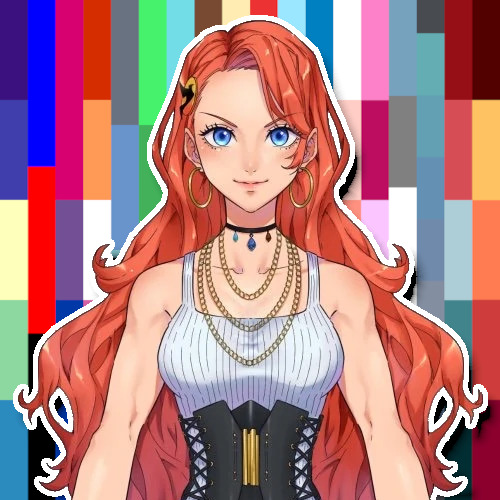

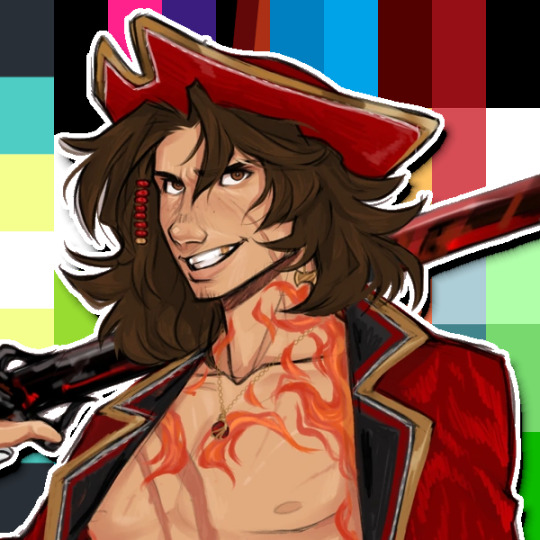



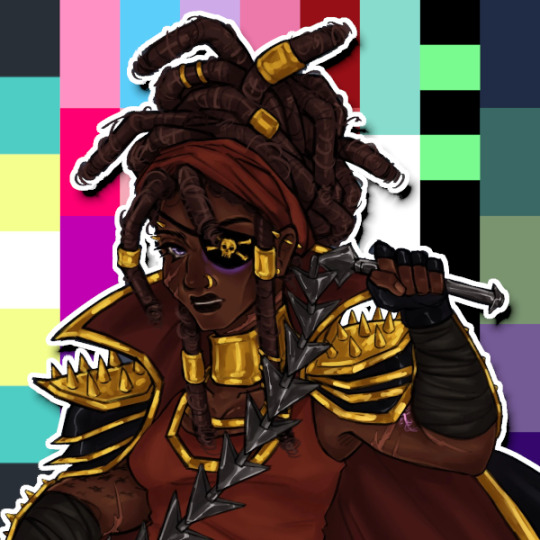

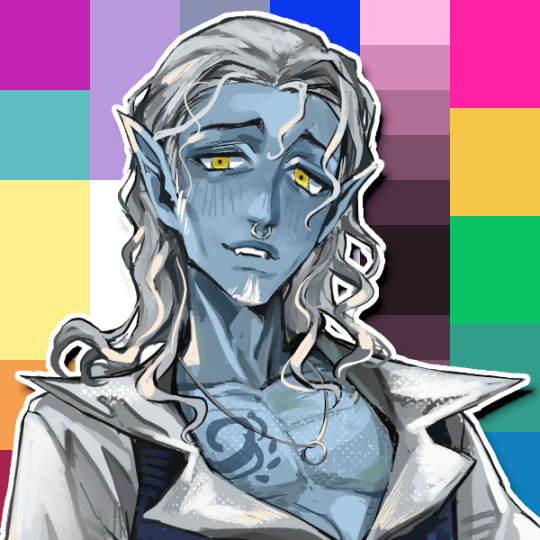

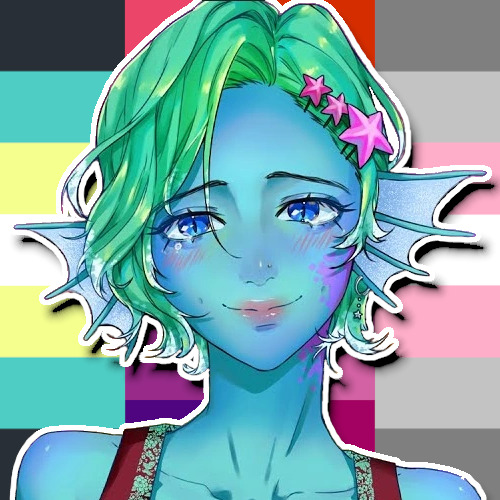












Jay Ferin from Just Roll With It: Riptide is a butch polyamorous biromantic lesbian caneusen resugender birdsproutaen birdgender sungender genderheat flightgender nautigender genderliber trans girl and a physically disabled cane user with PTSD and ADHD who uses she/her, they/them, and it/its pronouns!
She's in a QPR with Chip, an autistic quoiromantic pansexual piratecoric pyrogender nautigender trans man with ADHD, PTSD, and kleptomania who uses he/him pronouns and stims by biting things!
They both have an unrequited crush on Gillion Tidestrider, an autistic aromantic greysexual gay genderqueer genderfluid pangender gillgender genderocean genderakva torreteric deluctic thundergender moongender lunaemoen hielon paladarian autigender trans man who uses he/him, it/its, gill/gills, and fin/fins pronouns!
Lizzie Lafayette is an autistic bi lesbian trans tenebrationisian bigender woman with PTSD, OCD, depression, and chronic pain who uses she/her, they/them, and he/him pronouns!
She's in a QPR with Caspian, a flamboric genderqueer glaciagender genderwater tenebricumian pan gay man who uses he/him and they/them pronouns!
Edyn Tidestrider is an autistic femme lesbian demigirl who uses she/her, vae/vaer, and they/them pronouns!
Niklaus Hendrix is a flamboric femme transfeminine genderqueer nyctogender tenebellariumian genderpiceum burlesgender genderfuck polyamorous gay man with hypersexuality who uses he/him, she/her, it/its, they/them, and xe/xem pronouns!
Finn Tidestrider is an autistic pansexual transneutral bigender gillgender man with a special interest in ecology who uses he/him and she/her pronouns!
Drey Ferin is a casualic bisexual trans man who uses he/him and they/them pronouns!
Queen is an autistic GNC femme transfeminine nonbinary pangender musicagender classicagender melogender genderforte jestergender asexual straightbian with Tourette's who uses any pronouns!
Ollie is a transfeminine boylexic boy who uses he/him, they/them, and she/her pronouns!
dni link
#long post#mogai headcanon#just roll with it: riptide#just roll with it#jay ferin#chip#gillion tidestrider#lizzie lafayette#caspian#edyn tidestrider#niklaus hendrix#finn tidestrider#drey ferin#queen#ollie#butch#polyamorous#biromantic#lesbian#caneusen#resugender#birdsproutaen#birdgender#sungender#genderheat#flightgender#nautigender#genderliber#trans girl#physically disabled
29 notes
·
View notes
Text
To answer a couple of questions that were asked in the tags of my Thomas Jefferson intro
a) for @astronomicalgarbage, who asks if my Jefferson has a thing for Mac and Cheese:
Absofuckinglutely. There's an ongoing fight between me (Canadian) and him (American) about whether Kraft Dinner counts as mac and cheese or an abomination before the lord, and it's one of our favourite meaningless battles. We also correct each other's spelling on papers of words like favourite/favorite and colour/color.
b) for @tex-treasures, who wanted to know our favourite Pokemon and our favourite art periods!
My favourite Pokemon is Ditto, same as it is IRL ^-^ I also have a soft spot for Caterpie and Eevee. My favourite art period is the Pre-Raphaelites.
Thomas's favourite Pokemon are uhhhhhh Luxray, Rayquaza, and he likes Vulpix content. I feel like I don't have the actual knowledge to say what an actual fan like him would like! He likes Neo-Classicalism and chibi art -_-
c) finally, the big question from several people, IS THIS AN APRIL FOOL'S PRANK?
Short answer: yes, I thought it would be fun to do for April Fool's, Miku Binder Thomas Jefferson is not going to be a member of my F/O list. But I do appreciate everyone who turned out to support me <3 <3
Long answer: LMM's version of Thomas Jefferson was genuinely one of the first ten characters I drew selfship art with. As much as I like the aesthetics of the character, I simply have no desire to dive back into that fandom and the politics thereof. My Hamilton/Les Mis era of my life was one of rampant idealism and huge energy and I feel very far away from that earnest wide-eyed first year who was making eight-hour drives to the capital to wave signs on the weekend.
If I was going to selfship with LMM's Thomas Jefferson, I would probably make my own modern design without some of the details from Miku Binder TJeff, but with the same nostalgia for the exaggerated characteristics of the Hamilton fandom (ie. Alex never sleeps, Laurens loves turtles, Lafayette is nonbinary, Thomas loves mac and cheese, everyone has dated everyone else).
But ultimately I'm not going to put in that work. Suffice to say that although this was an April Fool's prank, it was with a lot of heart and genuine enjoyment that I got to explore this dynamic!
#insufferable pokelovers#my selfships#april fools#the tags on my post made me laugh so much#thank you all
11 notes
·
View notes
Text
Went from not sure about sharing OC’s to I’m gonna do everything! Anyway, here’s Jon Lafayette, mainly a BNHA OC but I do shove them into other fandoms from time to time. Commissioned by moho_peach on Twitter, Jon’s UA aged character sheet with updated hero uniform. They originally have their old uniform (that I don’t have any images of currently, though I have commissioned comics that show it off) throughout UA, but I just really like their new look.
Jon’s a transfer student from Toulouse France, got in on recommendations and comes from a very prolific family who own a mechanics shop where they make gadgets, weapons, machinery and vehicles for heroes. They are a tiny feral gremlin without an once of common sense or fear. Typical class clown, local idiot, no thoughts head empty, kid.
Jon is nonbinary, they use they/them pronouns, please be respectful of that. Their quirk is metal manipulation, they’re a boxer/kick boxer (Savate to be precise) and I have so much background for them. I ship Jon with everyone, so this is a OC/canon ship positive tumblr. Life’s too short to be mad about imaginary things. Have fun.

8 notes
·
View notes
Text
I'm still waffling back and forth on Lafayette. I said he'd be trans before, but now I'm thinking nonbinary androgynous. Born female, but leans masculine in most areas??? He is very petite.
3 notes
·
View notes
Text
why did hamilton fanfic always make lafayette nonbinary
3 notes
·
View notes
Text

B A S I C S
Full Name: Stevie Fitzgerald Faceclaim: Margaret Qualley Pronouns/Gender: she/they, nonbinary Age & Birthday: 30 & nov 28 Birth Place: New Bellevoux, Louisiana How long have they been in town?: 30 years ( On and Off ) Living Situation : Lafayette Hills; just upgraded from Macon Park Occupation: Tattoo Artist @ Wicked Tattoos
BIOGRAPHY:
Stevie grew up in Macon Park and up until recently, she was sure she’d die there.
Ok, that’s a lie. There was a time she thought otherwise. She wanted nothing more than to skip out of the trailer in Shady Grove the moment she finished high school. Maybe their brother didn’t make it out like he was supposed to, instead sticking around out of nostalgia or some silly duty to see them grow up, but they weren’t him.
Their childhood wasn’t his and theirs wasn’t…it wasn’t always great. Their mother held them tight. Too tight in their opinion. And so did Jason. Sure they let them spend their single digit years loose on Little Bear Creek Trail, the mason park docs, really anywhere their feet could take them, once she hit her double years, things changed.
Maybe that was due to the whispers. The idea that their father, Jason’s father, was not their own. That their mother liked to get around. That she was trash and that despite his once potential so was their brother. You know, the same old cliche small town bs. Or maybe it was the fights. Because adults are mean but kids? So much worse. And Stevie never stood for it. She’d lunge, she’d bleed, and occasionally black out for it.
Their mother never sided with her over it though. Stevie was the problem, not the little jerks of New Bellevoux Elementary or Middle. Jason took care of them though. Was he disappointed? Sure. But he was there. Always always there to make them feel more than just another problem in their mother’s long list.
It helped and so did his prodding for them to turn their attention away from the jerks and toward their passions. Art. Music. Writing. She did a little bit of everything, always carrying a pen or a pencil behind her ear. She was good. Excuse me, is good, cause that was their ticket out of New Bellevoux. An art school way way way away from NB.
Or it would have been if not for a certain rendezvous with a certain Tommy Duvall. They were friends. Really good friends despite the distaste he left in their mother’s mouth. And Jason’s too. But he was one of the few kids at the time that saw them for them and she wasn’t telling him to kick rocks for the reason everyone else told them to. And they were just having some fun. Partaking in some things they weren’t supposed to, in a place they weren’t supposed to and well– they were 18 and she…she was pretty sure she was a lesbian at that point. Guys were….eh, at best. But with their lack of judgment and their comfortability with Tommy? One thing led to another and…just once. Just to see.
Five weeks later, it was confirmed. She was pregnant and their world imploded.
Chaos ensued, not just in the normal way of like, oh yeah, your future is screwed, but the level in which their family reacted? Stevie expected it from their mother. The surprise came from Jason who had supported them in everything so steadfast up until this point. It was a big blow out, one that sent him to the nearest bar and them packing as just a few words from him made everything she ever knew to be true about their life unravel.
Those words? All this work and you still made the same stupid mistake I did– or something like that. She doesn’t quite remember. Only that next came the questions. He’d gotten someone pregnant? Who? When? Then his shut down, their attempt to leave, his attempt to control and their usual scoff. The usual roll of the eyes and the ok *dad* – something that was met with more fire than she had ever experienced and then…the click.
It all began to click into place. Jason. Their over involved, over protective, throw all his dreams away to stay here with them brother? Not their brother at all. It didn’t take long to prove it. A confrontation with their ‘mother’ settled it and Stevie was on their way out the door.
Being eighteen, there was nothing to keep them from it though looking back on it, being pregnant made it extra dumb. But so much was crumbling in so many directions.
It didn’t take long for them to come back. A few months. She didn’t say much and neither did they. She got a job, finally told Tommy– honestly everything leading up to Hayes’ birth and even a few months, maybe even years is a blur.
In that time she took off again. Going here and there, but never staying gone too long. Working this job and that job till she grew tired of it. Never really feeling settled or stable but putting in what work she felt she ‘had’ to take care of Hayes. Tommy wasn’t around much either, instead his parents helped out and of course Jason. But the latter was still just…strained.
It wasn’t until Hayes was about five that things began to shift. Why then? She couldn’t tell you. Just that she was tired. Tired of just…existing. Not in *that* way, but in the sense of doing the bare minimum in every part of life. It started with him– wanting to be better for him and then slowly for herself.
It wasn’t easy by any means. It still isn’t but in the last few years, things have been steady. Three years ago she stopped job hopping and started to apprentice at Wicked Tattoos. It had started as kind of a joke, them wanting to be a tattoo artist. She’d bought a tattoo gun at one of those treasure hunt blind box events and wanted to learn to use it. Turned out, she really enjoyed it and it spiraled into something serious. Just last year she graduated to a full time artist.
And all the pennies she’s been squirreling away for the last several years? She used to buy a fixer upper in Lafayette Hills. A place she’ll share with Hayes more often than not as Tommy has finally gotten his shit together too. They co-parent to the best of their abilities and yeah– things aren’t perfect. Not with him. Or Hayes. Or Jason. But they’re better and will be better. A bit at a time.
1 note
·
View note
Text
The hamilton fandom is getting boring can we bring back nonbinary lafayette,,,
0 notes
Text
i love reading old hamilton fics bcuz why is lafayette nonbinary, hamilton is either dying of starvation or having a panic attack whilst speaking spanish, john laurens is either a twink or a big scary man, and hercules is either asexual or nonexistant.
to rant a little bit HAMILTON SPEAKING SPANISH LIKE RANDOMLY DOESNT MAKE SENSE TO ME BECAUSE HIS 2ND (OR 1ST I CANT REMEMBER WHICH ONE HE LEARNED FIRST) WAS FRENCH. MAKE HIM OUI OUI.
what is the backstory for lafayette being nonbinary or some form of genderqueer in so many fics tho. why was he chosen.
0 notes
Text
#disney channel#marvel#moon girl and devil dinosaur#mgadd#banned episode#the gatekeeper#lunella lafayette#mgadd brooklyn#lgbtq#transgender#nonbinary
244 notes
·
View notes
Text
Flying Toward a Twenty-First Century Aesthetics of Technomagic Girlhood
by Ravynn K. Stringfield
What is Technomagic Girlhood?
When I began thinking, reading and writing about Black girl superheroes in my dissertation, I found I wanted a way to explore how characters like Riri Williams as Ironheart and Lunella Lafayette as Moon Girl were both performing fantastic feats while defining and creating their Black girlhood with the scientific, technological, and digital tools available to them. Their oft favorite feat? Flight. This list of characters includes but is in no way limited to: Shuri from Black Panther lore, Karen Beecher as Bumblebee, Lunella Lafayette as Moon Girl, and Max from Batman Beyond, the animated television show which ran on the Kids’ WB from 1999 to 2001. There are arguments to made for extending the category to include characters like Marvel Comics’ Misty Knight or even young Diana (Dee) Freeman from HBO Max’s Lovecraft Country, a speculative horror show adapted as a continuation of the 2016 Matt Ruff novel of the same name. In entering a conversation around Black superheroines that scholars like Sheena Howard, Deborah Whaley and Grace D. Gipson have nourished, technomagic girlhood became the term I used, as I was fascinated by the way innovative digital practices and self-making become intertwined for Black girls in superhero stories where our current reality and its technologies were recognizable, but where these girls could manipulate technology to give themselves the ability to literally (and metaphorically) fly.
The idea of technomagic girlhood draws energy from a number of related terms, primary among them being Afrofuturism, the artistic/aesthetic movement and critical framework around the relationship of folks of the African diaspora to the future, technology, and questions of liberation.1 Technomagic girlhood sits underneath the large Afrofuturistic umbrella, though it takes as its large focal point the fantasy genre, magic, the unexplained, whereas much of the strongest Afrofuturistic theorizing prioritizes science fiction as a genre. Work is being done amongst scholars all over to push the boundaries of what constitutes Afrofuturism, and what is in conversation with it.
Also related is Moya Bailey’s term, digital alchemy, which she uses in Misogynoir Transformed to refer to “the ways that women of color, Black women, and Black nonbinary, agender, and gender-variant folks in particular transform everyday digital media into valuable social justice media that recode the failed scripts that negatively impact their lives” (24). Hashtags under the work of Black women, Black queer folks and Black gender expansive folks become entire movements, with “alchemy” implying a chemistry. The chemistry of it all denotes a type of a work, rather than the social justice media appearing as if by will alone, and not backed by the labor of Black women and femmes. I prefer technomagic rather than alchemy because magic connotes, for some a discipline, but contains a joy of use as well. Bailey continues: “Digital alchemy shifts our attention from the negative impact stereotypes in digital culture to the redefinition of representations Black women are creating that provide another way of viewing their worlds” (24). There is a joy in learning to manipulate science, technology and the digital to your own ends for experiments in redefinition and self-making in technomagic girlhood.
For this playful turn, I draw from digital ethnomusicologist Kyra D. Gaunt’s work on embodied play and Black girlhood. I also use “magic” because it locates me more clearly in a legacy of the Black speculative, the Black fantastic, longer traditions of Black girls in magic—and accounts more clearly for how it is possible for these girls to fly. But to fly does not always mean “magic” is afoot. Flight is a condition of reality in texts such as Virginia Hamilton’s retelling of African American folk tales, The People Could Fly (1985), in which Africans take flight back home, and Toni Morrison’s critically acclaimed novel, Song of Solomon (1977), in which Pilate takes to the air. The “techno” prefix is inspired in part by film scholar Anna Everett’s work on Black technophilia and draws us more toward a legacy of Black participation in technology and the digital.
As in #BlackGirlMagic, a commonplace example of technomagic girlhood practice to me, the magic and the fantastic are deeply rooted in reality. This hashtag originates with CaShawn Thompson, who in an interview with journalist and author Feminista Jones says: “I was the first person to use Black Girl Magic or Black Girls Are Magic in the realm of uplifting Black women. Not so much about our aesthetic but jut who we are.” Our magic, Thompson argues, is simply the truth; it was true of her everyday life and how she experienced the world. There is nothing speculative about it, and simply and uniquely of Black girlhood. In many ways, Thompson’s understanding of Black Girl Magic is in conversation with how I understand technomagic girlhood and the potential of what it could be.
I specifically came to use “technomagic” when writing about Marvel Comics’ teenage superhero Riri Williams, also known as Ironheart. The young Chicagoan was able to create her own version of Tony Stark’s Iron Man suit, making her supergenius hypervisible on a large scale, but which she uses locally to help her community. Afrofuturism was the term that I had used for a long time in my work on her, but when we are first introduced to Riri in Eve L. Ewing and Luciano Vecchio’s run, this Black girl, in her tech suit by which she has engineered herself the ability to fly, her face turned skyward, reveling in joy and legacy as seen below…something else occurring. Something that needed to center Riri’s Black girlhood, her experimental and creative self-making through technology, and the joy of impossibility now made tangible…2
Technomagic girlhood is in part a response to some of the questions that André Brock, Jr. asks in Distributed Blackness about whether or not his work on technology and the internet is Afrofuturistic: what about the digital present? Afrofuturism, Brock argues, “is rightly understood as a cultural theory about Black folks’ relationship to technology, but its futurist perspective lends it a utopian stance that doesn’t do much to advance our understanding of what Black folk are doing now” (15). In considering the “now” in possibilities of Black technophilia, technomagic was where I had space to spread out and play as Riri does, as many of the contemporary Black girls do, informed deeply by the legacies and lineages that have come before.
Cover Girls
I choose to examine here Riri Williams as the catalyst for my interest in the topic, along with DC Comics’ Natasha Irons. In what follows, I address these characters’ relationship to technomagic, as seen in the covers for the collected edition of Ironheart: Meant to Fly (Marvel, 2020) and Action Comics #1054 (DC Comics, 2023) that exemplify a few core characteristics of a visual aesthetics of technomagic girlhood and work in tandem.
Technomagic describes a particular quality of contemporary Black girlhood, expansively defined. While this idea most certainly can be applied to other groups of people, I use it as a way of understanding the relationship Black girls in superhero media and other fantasy narratives have to science, technology and digital media, to creativity and joy, and to self-making. By Black girlhood, I often think of how Aria S. Halliday and the authors of the Black Girlhood Studies Collection interrogate the ways in which society tends to conflate Black girlhood and Black womanhood, in both seemingly innocuous and explicitly dangerous ways. Black girls’ joy practices are central to education scholar Ruth Nicole Brown’s work and are resonant here when viewing Riri in Ironheart #1, skyward facing, heart open and Natasha’s focused joy on the cover shown below.
To remember that Black girlhood can be expansive, it is important to incorporate writers who consider girlhood to be a state of mind and being, rather than exclusively an age range. Digital ethnomusicologist Kyra D. Gaunt, for example, asks readers to engage questions of girlhood that include women who might begin their intimate stories to each other with a resonant, “Giiiirl” (p. 2). And Moya Bailey urges readers to consider a wider breadth of possible people who might be brought in by widening what we consider womanhood in her book Misogynoir Transformed: Black Women’s Digital Resistance—in particular, she argues that more than cisgendered heterosexual Black women are harmed by misogynoir (p. 18-22). This is relevant for Natasha (above right), who is canonically a lesbian in the comics, and whose cover brings to mind the colors of the bisexual flag: pink, purple and blue.
After the primary condition of Black girlhood is established, there are secondary conditions that are present in an aesthetics of technomagic girlhood. These include elements of:
impossibility, whether feats or conditions;
creativity, ingenuity, or innovation, often expressed as a practice of the girl in question;
technology, science, or digital media;
self-making or alter-ego creation; and
unbridled joy.
The magic emerges from the clear masterful manipulation of most of these elements in a playful fashion, often for heroic ends, though regularly for their own enjoyment as well.
When we look at these two covers together, we can see elements from many of these categories. On Riri’s cover (by Amy Reeder for Ironheart #43), we see a young Black girl who has presumably engineered herself the ability to fly—impossibility—but who, in this instance, is now falling. Riri falls downward and, judging by the surprise on her face, it appears that the Ironheart suit she has created for herself has fallen apart. It calls to mind the image of the Greek myth of Daedalus and Icarus, though Riri is both: she is both the famed inventor and also the child who maybe has flown too close to the sun. Riri’s relationship to this myth calls to mind the ingenuity and technology inherent to technomagic girlhood. But the image is juxtaposed with the title phrase “meant to fly”—so, perhaps it is that Riri’s suit is coming to her, not away from her, to save her, to enable her flight, because that impossible feat is what she deserves, and she knows it is hers. She created the impossible and trusts in her own ability—self-making. Notably, in issue #1, Riri can find who she is within the suit, and within a larger legacy not just of superheroics, but of Black women who made her possible. This is both self-making and joy.
DC Comics’ Black girl science genius, Natasha Irons, has a longer history than Riri Williams. Where Riri’s origins date back to the Invincible Iron Man run in 2016 (Vol. 3 #7) written by Brian Michael Bendis and illustrated by Mike Deodato, Natasha Irons was introduced as Dr. John Henry Irons’ precocious niece in Steel #1 (February 1994), written by Jon Bogdanove and Louise Simonson, with art by Chris Batista and Rich Faber. While Irons earns his claim to fame by filling in for Superman, going on to becoming a hero in his own right, over time Natasha develops an aptitude for science as she hangs around her uncle, eventually proving adept at working on Irons’ suit and going on to develop her own. Natasha’s heroism in her own right has only deepened with time. With a new Steelworks run beginning in the summer of 2023, there have been opportunities for Natasha fans to get excited. Most recently, Action Comics #1054 had a variant cover (1:25) by Milestone Initiative artist Yasmín Flores Montañez featuring a solo Natasha in a similar vein to the iconic Riri “Meant to Fly” cover (shown above).4
On this cover, Natasha more clearly appears to be attracting the pieces of her suit to her as she leans over, possibly suspended in air—similar to some iconic scenes from the Marvel Cinematic Universe Iron Man films—anchored by a neon pink background, with a touch of blue, guiding viewer to think more critically about our gendered assumptions regarding technology and science. There’s a look of satisfaction on her face—this is where she is meant to be. She clearly wears the crest of the House of El—Superman’s iconic “S”—as a symbol of hope, though perhaps this will mean something different for Natasha in the issues to come. Natasha’s relationship to this technology, her ability to manipulate it, will inevitability lead to some creative self-making in relationship to this iconic symbol and who she is within in—and without it.
Optimally, technomagic girlhood does not prioritize a capitalistic notion of the lone Black girl science genius. It is not simply “Black Girls Code” for a means to an end. There must be a fantastic joy to it, enabling the Black girl in question to just be, to simply exist, to feel confident in exploring her sense of self, to experiment in self-making. It is not the entering into science and technology spaces to perpetuate capitalistic ideas of productivity or advancement, but for joy and exploration of the self. Therefore, those who care about the well-being of Black girls—all children—must work toward communal needs being met.
In order for this to be meaningful, it needs to be communal, or in relation to others, as it is portrayed in Eve L. Ewing’s twelve-issue Riri Williams: Ironheart run (2018-2019). The idea of the lone Black girl genius feeds into harmful stereotypes related to the magical Negro; instead, intelligence can, and should be, nurtured in community. In Ewing’s Ironheart, Riri’s mother is a loving and watchful presence. Xavier King is Riri’s friend in the series, not just a teammate as many of the other supers she encounters in other runs are. Xavier cares about Riri as a person, with no real investment in what she can offer him. Those who participate in technomagic girlhood are still, after all, girls—children—and still need to love and be loved.
Ewing’s Ironheart gives Riri something she hasn’t had until that point: space to be. We should be working towards these girls’ ability to just be. The ability to create and play in these spaces is contingent on safety. Though Black girl will continue to create and play in spite of oppressive systems, it does not mean these systems as constructed are just. What will it mean for technomagic girlhood to not just be reactive, but to be generative?5 What will it mean for technomagic girlhood to embrace Afrofuturism in so far as it connects to questions of abolition, which devalues the role of policing and commits to a politics of care, as we seek to imagine new and better worlds for Black people, especially children?6 By this I mean: when safety and care are prioritized, what new worlds might our Black girls imagine with their newfound access to digital tools?
Conclusion
With technology, science, and digital media as the backdrop of our era, Black girls who engage in technomagic are increasingly enabled. They are the girls in fantasy stories who may not be gifted with an inexplicable gift for controlling the weather or who can speak to animals, but who have a technophilia akin to magic. They make their ordinary lives extraordinary with their ability to manipulate and build their sense of self in the process. Here, I’ve examined technomagic in superhero narratives, but the principles can and likely will apply across different types of speculative media where Black girls have unique relationships to science, technology and digital media. In particular, these girls are often seen more widely in comic stories adapted for screen: most folks met Riri Williams for the first time on screen in Wakanda Forever (dir. Ryan Coogler, 2022), the sequel film to Black Panther (dir. Ryan Coogler, 2018).
While the general connotation of this term slants towards positivity, as does a related popular phrase like Black Girl Magic, or the hashtagged version: #BlackGirlMagic, it’s worth approaching it with a touch of skepticism and several doses of care. Technomagic, while it does align us with the idea of the Black girl science genius, can also perpetuate the trope of the solitary genius, an idea which Ironheart writer, Eve L. Ewing, problematizes in a 2021 interview with Catapult: “…If that [the trope of the Black girl STEM superhero] becomes the only mode through which we see Black girls, that’s also a problem… I love Ironheart, I love Riri, but Shuri and Riri and Moon Girl are all science geniuses, you know? How does that reinforce certain limited notions about what Black intelligence or Black genius has to look like? How does that play into capitalist-driven conversation about Black girls in coding or Black girls’ participation in science fields?”
To Ewing’s inquiry and to Bailey’s assertions that digital alchemy helps us think about the possible ways Black women are redefining and rethinking about themselves, technomagic girlhood might offer one potential answer. Where we are able to keep joy practices, build and form community together, and experiment in self-making, we protect the essence of technomagic girlhood.7
Notes
1 The term “Afrofuturism” was originally coined in the 1994 roundtable essay “Black to the Future: Interviews with Samuel R. Delany, Greg Tate and Tricia Rose” by cultural critic Mark Dery in Flame Wars: The Discourse of Cyberculture. It is noted in the essay that Afrofuturism, both as an aesthetic and as a critical framework, has a much longer history, including origins that are often thought of as musical, thinking about the contributions of experimental musicians such as Sun Ra.
2 In this panel, Ewing invokes the legacy of Maya Angelou's poem “Still I Rise” (1978). The entire stanza reads:
Leaving behind nights of terror and fear I rise Into a daybreak that’s wondrously clear I rise Bringing the gifts that my ancestors gave, I am the dream and the hope of the slave. I rise I rise I rise.
3 Notably for this essay, Reeder is also known for her artwork on Moon Girl and Devil Dinosaur.
4 Milestone Media was an African American centric superhero comics publishing company founded in 1993 by Dwayne McDuffie, Denys Cowan, Michael Davis and Derek T. Dingle. DC Comics is currently relaunching Milestone and reintroducing its characters by bringing in a class of artists and writers specifically dedicated to the mission of Milestone. Flores Montañez is part of the Milestone Initiative’s inaugural class.
5 This question is in the spirit of Moya Bailey, whose work and distinction between generative and defensive alchemy as one which is creative for the community and one which is responsive to hatred. It is my hope that technomagic girlhood is framed similar to a generative digital alchemy.
6 I think here of the necessary and timely work of abolitionist organizers and writers Kelly Hayes and Mariame Kaba in their new book Let This Radicalize You: Organizing and the Revolution of Reciprocal Care (2023).
7 Gratitude: Many thanks to early readers of this piece for offering kind words and useful insights: Vanessa Anyanso, Shira Greer, Dr. Autumn A. Griffin, Dr. Jordan Henley, Grace B. McGowan, Kristen Reynolds and Dr. Justin Wigard. Conversations with KàLyn Banks Coghill and Dr. Francesca Lyn were also invaluable. Though they are not cited here, the scholarship of education scholars Drs. Ebony Elizabeth Thomas and S. R. Tolliver remain deeply influential to how I think and write. I would like to thank Dr. Shawn Gilmore for his careful editorial eye.
Works Cited
Bailey, Moya. Misogynoir Transformed: Black Women’s Digital Resistance. New York University Press (2021).
Bogdanove, Jon and Louise Simonson. Steel #1. DC Comics (1994).
Brock, André. Distributed Blackness: African American Cybercultures. New York University Press, (2020).
Everett, Anna. “On Cyberfeminism and Cyberwomanism: High-Tech Mediations of Feminism’s Discontents.” Signs (Vol. 30, No. 1).
Ewing, Eve L. & Luciano Vecchio. Riri Williams: Ironheart #1-12. Marvel Comics (2018-2019).
Ewing, Eve L. & Luciano Vecchio. Riri Williams: Ironheart: Meant to Fly. Marvel Comics (2020).
Gaunt, Kyra D. The Games Black Girls Play: Learning the Ropes from Double Dutch to Hip-Hop. New York University Press (2006).
Halliday, Aria S. ed. The Black Girlhood Studies Collection. Women’s Press, CSP (2019).
Jones, Feminista. “For CaShwawn Thompson, Black Girl Magic Was Always the Truth,” Beacon Broadside (2019). https://www.beaconbroadside.com/broadside/2019/02/for-cashawn-thompson-black-girl-magic-was-always-the-truth.html
Montañez, Yasmín Flores. Action Comics #1054, 1:25 Variant Cover. DC Comics (2023).
Stringfield, Ravynn. “How Eve L. Ewing Makes Her Stories Fly,” Catapult Magazine, May 19, 2021. https://catapult.co/dont-write-alone/stories/interview-with-dr-eve-ewing-by-ravynn-stringfield
#Ravynn K. Stringfield#feature#comics#Ironheart (comic-book series)#Action Comics (comic-book series)#Black Panther: Wakanda Forever (2022)#film
1 note
·
View note
Note
All characters from just roll with it: riptide
Jay Ferin is a butch polyamorous biromantic lesbian caneusen resugender birdsproutaen birdgender sungender genderheat flightgender nautigender genderliber trans girl with PTSD and ADHD who is a physically disabled cane user and uses she/they/it pronouns. she is in a QPR with
Chip, a pansexual quoiromantic piratecoric pyrogender nautigender autistic trans man with ADHD, PTSD and kleptomania who uses he/him pronouns and stims by biting things. both of them have an unrequited crush on
Gillion Tidestrider, an aromantic greysexual gay autistic genderqueer genderfluid pangender gillgender genderocean genderakva torreteric deluctic thundergender moongender lunaemoen hielon paladarian autigender trans man who uses he/it/gill/fin pronouns.
Lizzie Lafayette is an autistic trans bi lesbian tenebrationisian bigender woman with PTSD, OCD, depression and chronic pain who uses she/they/he pronouns. she is in a QPR with
Caspian, a flamboric genderqueer glaciagender genderwater tenebricumian pan gay man who uses he/they pronouns.
Edyn Tidestrider is an autistic femme lesbian demigirl who uses she/vae/they pronouns.
Niklaus Hendrix is a flamboric femme transfem genderqueer nyctogender tenebellariumian genderpiceum burlesgender genderfuck hypersexual polyamorous gay man who uses he/she/it/they/xe pronouns.
Finn Tidestrider is an autistic transneu pansexual bigender gillgender man with a special interest in ecology who uses he/she pronouns.
Drey Ferin is a casualic bisexual trans man who uses he/they pronouns.
Queen is an autistic femme gnc transfeminine nonbinary pangender musicagender classicagender melogender genderforte jestergender asexual straightbian with tourettes who uses any pronouns.
Ollie is a transfem boylexic boy who uses he/they/she pronouns.
queued!
3 notes
·
View notes
Text
friendly reminder that...
LAFAYETTE IS A NONBINARY ICON.
#lafayette#marquis de lafayette#hamilton#this musical has been half of my personality for six years imma be honest with y'all#nonbinary lafayette#have a nice day y'all
6 notes
·
View notes
Text
Hey!
Hey! I’m Hamilkin, and still trying to figure this mess out??? I’m p sure I’m John Laurens but I’m still trying to figure it out! I think I do have memories though! Of like a modern (??) au, and Hercules Mulligan, Alexander Hamilton, and le french baguette being in a poly relationship with moi. Lafayette was non-binary. We were all very gay and stupid it was great.
I am boy-flux! That means that my gender switches between male, agender, and non-binary. He/him as a standard, please! Don’t use the others unless I tell you that I am another gender! Please don’t use she/her (I am afab)!
Hit me up if you remember this, or you are also Hamilkin and want to make a new friend!
Also, I am under 18, so pls don’t interact if 18+!!
#hamilkin#john laurens kin#john laurens#hamilton#alexander hamilton kin#alexander hamilton#lafayette#lafayette kin#hercules mulligan#hercules mulligan kin#id love to make friends#I am lonely lol#nonbinary lafayette
7 notes
·
View notes